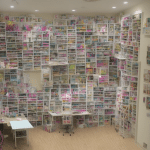Designing a child’s bedroom is a task that holds more weight than one might initially think. It’s not just about picking the right color or selecting the perfect furniture. More importantly, it’s about creating a space that will support your child’s growth, stimulate their creativity, and ensure their safety. In this article, we’ll guide you through the process of crafting a bedroom that your child will love and thrive in.
Creating a Safe Space
Safety should be the top priority when designing a child’s room. Regardless of how attractive the room setup may be, if it doesn’t promote safety, it won’t do justice to your child’s wellbeing. Here are a few pointers to keep in mind while designing a safe and comfy space for your kid.
This might interest you : How Are Biodegradable Materials in Medical Devices Advancing Sustainability?
Choosing the Right Furniture
While choosing furniture for your child’s bedroom, consider its functionality and safety. Avoid furniture with sharp edges and make sure they are sturdy and secure. Opt for non-toxic materials, especially because young children have a habit of putting things in their mouths. For beds, a low-to-the-ground design is often safer for younger children, reducing the risk of falling.
Also to discover : How to Design Real Estate Projects That Support Multigenerational Living?
Secure the Space
Make sure all furniture and decorations are secured, especially if they’re heavy. Dressers, bookshelves, and other large furniture pieces should be anchored to the wall to prevent tipping. Window guards are also a smart addition, especially for upper-level rooms.
Fostering Functionality
Beyond safety, the child’s room should be a functional space that can accommodate their needs and activities. It should be a place for not just sleep, but also for play, study, and storage.
Smart Storage Ideas
In a kid’s room, storage is key. From toys to books to clothes, kids have a lot of stuff. And let’s face it, it’s easy for their room to become cluttered. So, when designing a child’s room, planning for ample storage is a must. Consider using multi-purpose furniture like a bed with built-in drawers or a table with shelves. Wall-mounted shelves and baskets can also help keep the room organized and save floor space for play.
Room for Play
Playing is an essential part of a child’s development. Hence, the bedroom design should incorporate a play area. This can be as simple as a dedicated corner with a play mat and toy storage. If space allows, you can create a playroom within the bedroom with a teepee or a miniature kitchen set.
Inspiring Creativity
A child’s room is a sanctuary where they can express their personality and explore their creativity. Therefore, it’s crucial to design a space that inspires and encourages them to dream and create.
Wall Art and Decor
Wall art is a great way to add a touch of personality to the bedroom. Choose or create art that your child loves and is inspired by. You can also involve your child in the process by letting them select the art or even create it themselves. Decorative elements like vibrant colors, patterns, and their favorite characters can make the room feel more personal and stimulating.
Interactive Elements
Interactive elements such as chalkboards or magnet boards can be a great addition to a child’s room. These can serve as a creative outlet for your child, allowing them to draw, write, and express themselves freely. Other interactive elements like a small craft table or a reading nook can also foster creativity and imagination.
Designing a child’s room requires more than just an artistic eye. It calls for a deep understanding of a child’s needs and a keen attention to safety and functionality. By incorporating these principles and ideas, you can create a space that not only looks good but also serves as a safe, functional, and creative haven for your child. And, of course, don’t forget to involve your child in the process and consider their preferences and ideas. After all, they are the ones who will be spending the most time in that space.
Age-Appropriate Design
As parents, we are often tempted to create a room straight out of a catalog or a dreamy Pinterest board. However, it’s crucial to remember that a child’s bedroom should be age-appropriate. The design, furniture, and toys should cater to the child’s current stage of development.
Keep it Kid-Friendly
When designing a kid’s room, it is vital to ensure that all elements are kid-friendly. This means avoiding objects with potential hazards and including items that promote learning and fun. For instance, an interior designer would recommend investing in furniture that grows with your child. Adjustable desks and chairs, beds that convert from crib-to-toddler-to-single, etc., can be a wise investment in the long run. This provides continuity for your child and is also pocket-friendly as it eliminates the need for frequent furniture changes as your child grows.
Promoting Independence
Design the room in a way that encourages independence. This could mean placing toys, books, and clothing at a level your child can easily reach. For example, use open shelves instead of high cupboards, so your child can pick out their toys or books easily. A low bed allows them to climb in and out with ease. A room designed to promote independence encourages responsibility and self-reliance in a child.
Creating A Playroom That Grows With Your Child
Children’s interests change rapidly as they grow, and their bedrooms need to be adaptable to cater to these shifting interests. Designing a playroom that grows with your child can be a great way to make room for these evolving needs.
Flexible Floor Space
Incorporate flexible floor space that can be constantly updated to match your child’s changing needs. For younger kids, this space can be a play area filled with their favorite toys. As they grow older, the area can be transformed into a study space with a desk and chair. The idea is to create a space that will adapt to your child’s development stages.
Inspiring Playroom Ideas
You can design an age-appropriate playroom that inspires creativity and learning. For younger children, consider incorporating tactile play elements like a sand and water table. As they grow older, you can introduce educational toys that stimulate their cognitive abilities. You can also consider adding a reading nook to promote a love for reading from an early age.
In Conclusion
Designing a child’s bedroom goes beyond just aesthetics. It is a blend of safety, functionality, and creativity. From choosing the right furniture to creating a playroom that grows with your child, every decision should aim at creating a room that caters to your child’s developmental needs.
Understanding your child’s needs and interests is the first step towards creating an age-appropriate, kid-friendly space. So, involve your child in the design process, ask for their opinions, and make room for their preferences. After all, a child’s bedroom is their haven – a place where they sleep, play, learn, and grow. So, remember to design a space that your child will not just use, but also love.
Image credit to all the interior designers and parents who have shared their creative and functional kids bedroom ideas. Your contributions have paved the way for more innovative design ideas, promoting safer and more stimulating environments for children.
And as an end note, remember that safety should always be the topmost priority, followed by functionality. Creativity, while important, should not compromise on these two aspects. Happy designing!












